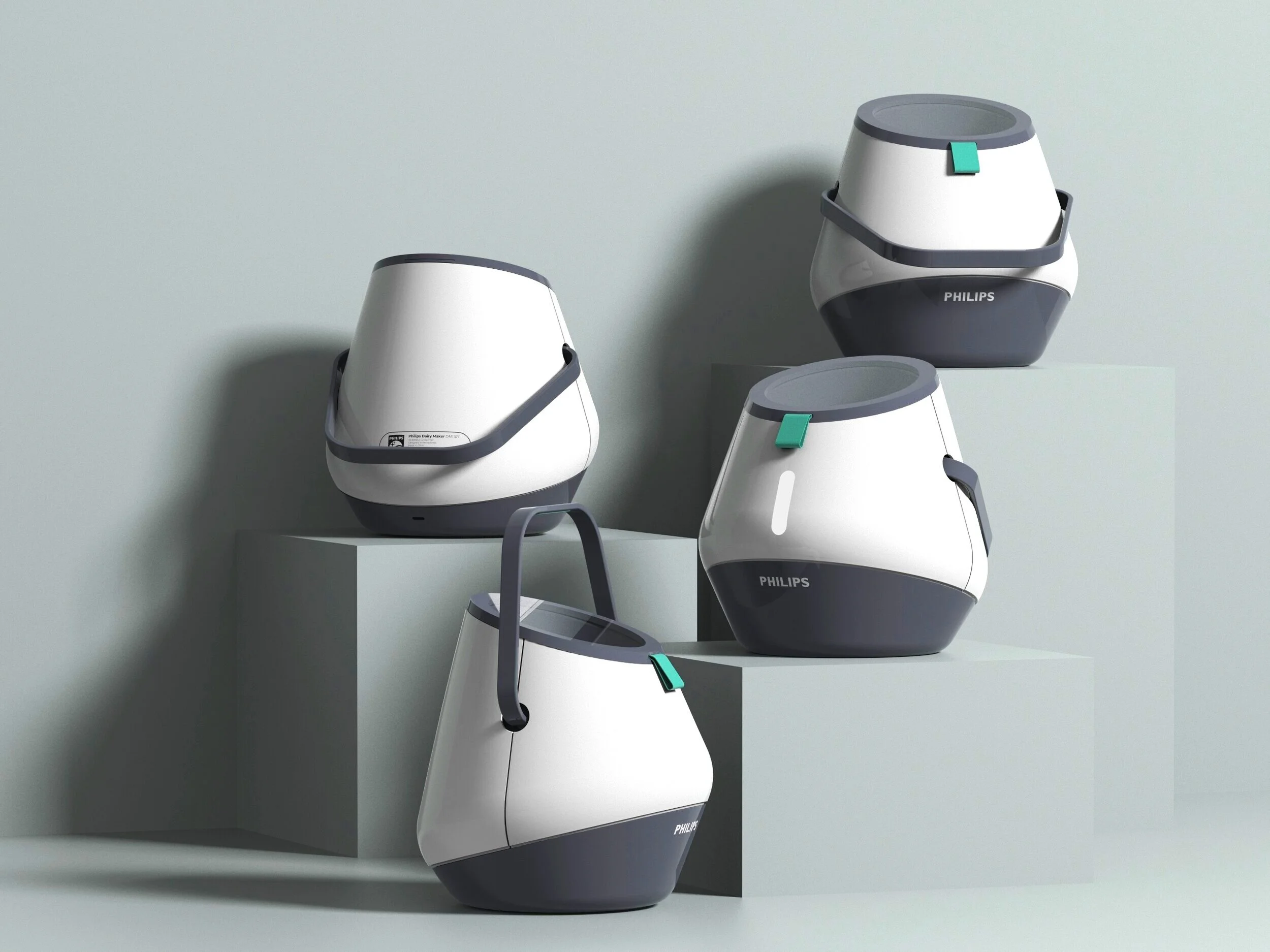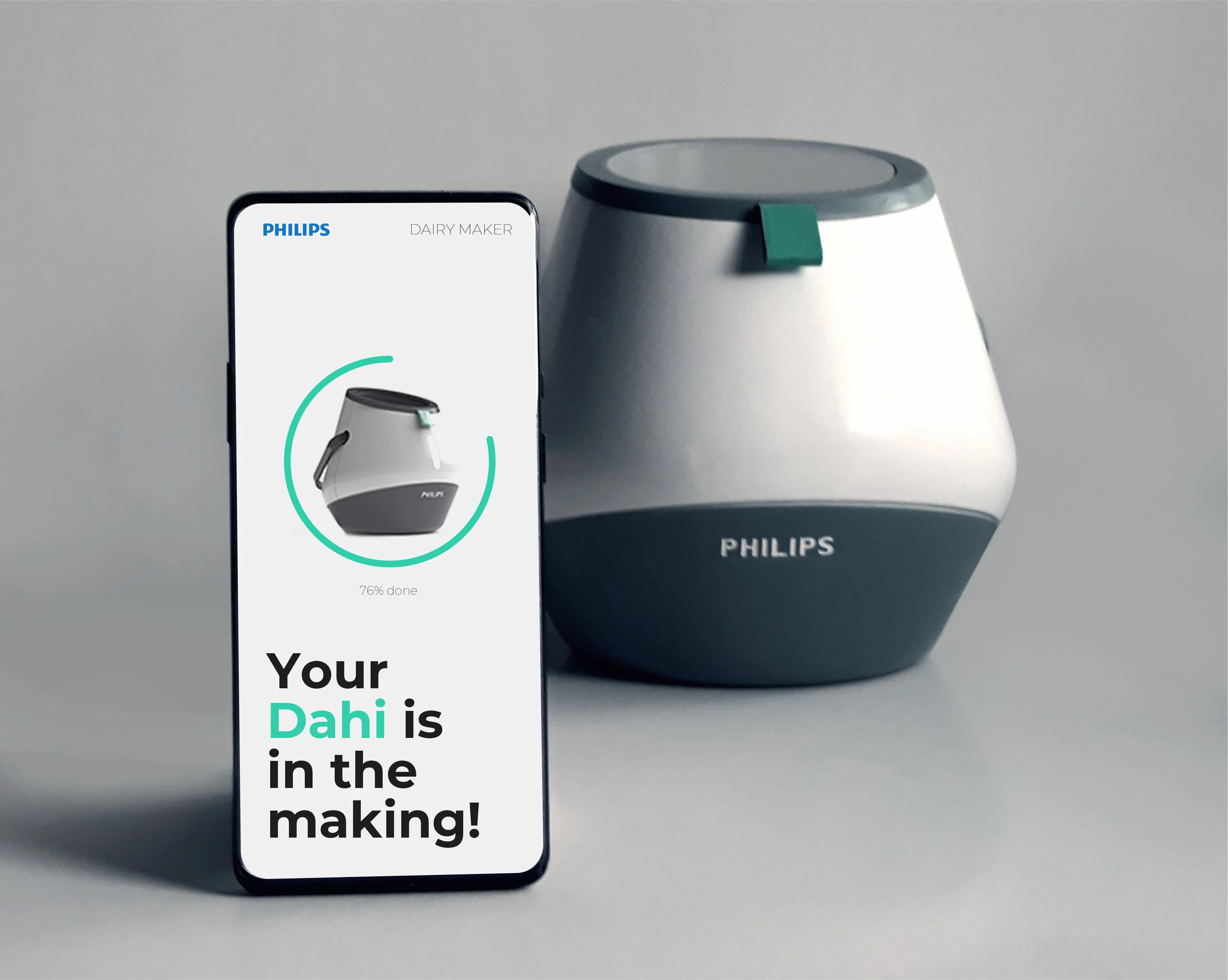
Dairy Maker
Live project in collaboration with Philips, Bangalore
The brief was to develop a futuristic IoT based device for Indian kitchens which solves a necessary problem commonly found in Indian households catering to working couples and bachelors. The initial project was a part of Human-Machine Interaction coursework.
Live project / 6 weeks / research & intervention done in group
Research
Onsite research was conducted to better understand the cooking and eating habits of people and get a thorough understanding of the current kitchen scenario in India. We started looking for pain points that we could cater to and conducted interviews with 30+ houses to learn about their needs.
Insights
Based on the research, pain points were observed among the users which were carefully noted. These pain points mainly revolved around dairy products which were consumed greatly among households. We found out that curd was consumed greatly among all households at least once a day in a meal.
Poor judgement in curds quality
Preparation of dairy products is hectic
Over boiling and spillage
Packed products contain preservatives
Consumption of nutrients is unknown
Weather affects the dairy quality
Concepts
After some brainstorming, ideas were quickly sketched on a paper. The form was developed keeping the Indian traditions in mind and hence the traditional Indian clay pot was a key inspiration. The design direction was to break a little from the symmetry and still be related to a clay pot.
Mockups
Clay mockups were made to explore the form further in the third dimension. This gave great clarity towards selecting the final form. The slant was given importance so the users can easily interact with the product without bending and searching for buttons. The stance was made such that the device looks big to serve the whole family but is also small enough making it easy to store.
3D Modeling
While detailing the product in 3D software the initial brief was kept in mind to make it a futuristic IoT device. The form finalized breaks the symmetry from the side but is symmetrical from the front to resemble clay pots making the design language interesting and still look like a Philips product. Renders were made to see the final design come to life and make the device more visually appealing.
Prototyping
Some low and high-fidelity prototypes were made to see the design in real life and validate it with users. This helped to determine the perfect size required for Indian kitchens fitting in with their requirements. Parts were colored and assembled. Finishing touches were added to make it look real. This was a look and feel prototype which showed the approximate size, color, and finish.
Usage
The usage is simple and easy, the form tries to guide the user on how to use it. The user has multiple points to interact with making it an interesting product to use daily.
Detailing
The packaging was also designed keeping in mind the brand language of Philips and their current line up making sure it fits in perfectly and made the design look believable. Few pictures were clicked in the kitchen to see how it fits in with the environment.
































